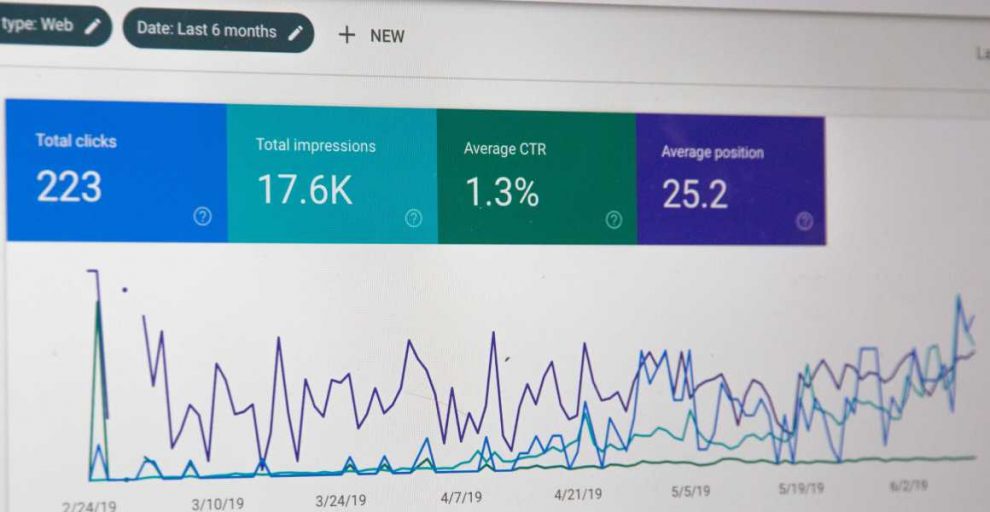Building a small business doesn’t only take a lot of energy and vision. It also includes meticulous planning when it comes to marketing. It’s vital for every business to be active on as many online channels as possible. From social media and YouTube to ads and search engine optimization, many features can improve your visibility on the Web.
What’s important is that you keep improving those strategies and work on them on the go.
In that light, business owners need to learn how SEO can help them skyrocket their business. In this guide, you’ll see some evergreen SEO strategies for a small business that will ensure long-term success in promoting your website to Internet users.
1) Mind the website organization
One of the first things that a visitor sees when they come to the website is its organization.
In a nutshell, it has to be intuitive and simple but it also has to provide website visitors with enough information to stay on the website.
This is where navigation also plays a huge role. For instance, if a potential customer comes to an SMB-website, they want to immediately have a look at your portfolio or client list. In that case, vertical navigation will come in handy.
As for the client list and testimonials, some websites put it on the homepage, while others create a special section. If you choose the second option, make sure that you place a link to the homepage that will take your visitors to the Testimonials.
Also, it’s crucial that each and every page on your website contains a search bar and a homepage button. This will ensure that your visitors can get as much information from your website as possible. What’s more, letting them quickly navigate between pages will reduce the bounce rate.
For more practical tips on the importance of proper website organization, you can read Neil Patel’s guide on the benefits of website simplicity.
2) Publish relevant content on the blog
Content is your greatest on-site ally in attracting visitors and turning them into your regular audience.
However, it’s not always simple to keep pace with the competition or to know how to meet your own demands on the website.
For starters, the content you create for your small business website has to relate to what you do.
We can often see that some websites are trying to increase their conversion rates by publishing entertaining content. This can be an effective method for driving more traffic towards your website and your business, especially if you come up with an amusing About Us page.
Still, insisting on being entertaining on a business website could backfire at you. While being authentic is something both Google and Internet users appreciate, being a jester isn’t good for your business perspective.
Therefore, the content on your blog (and the entire website) has to be based on thorough research of current trends and detailed presentation of your services.
Every project you provide on your website as part of your portfolio has to be accompanied by visual and audio materials. Also, place the prices of your services on the website, as well as all the packages that you offer. If you’re vague about pricing, people might not trust you from the very start.
To cut a long story short, the content you publish on your website is the showroom of your brand. Hence, make it shine and blossom by providing an added value to its visitors.
3) Collaborate with popular authors
Making your blog relevant and informative is extremely important for your online popularity and SEO rankings.
That being said, it’s important to say that one of the best ways to achieve this goal is to collaborate with popular authors.
For starters, you can enrich your own blog posts with links to articles written by experts in your niche.
As you keep sharing the chosen ones and follow them in social media, you should move a step further and start interacting with them. Writing reasonable comments below their posts and using the same hashtags as your target authors are practical ways to be seen.
The next step is to ask them for permission to publish their posts on your website. More often than not, they will be glad to get published on another website. And if they see that you have already had some sort of online interaction, they’ll be more likely to collaborate with you.
Of course, the greatest names of the industry might ask you to pay for publishing their work. Some might even be willing to write a special post for your blog. Depending on the scope of your business, it’s up to you to negotiate the terms. More popular SMB-websites will be able to pay for such posts from ads on the website.
On the Scoop website, you can read more about different ways to get influencers to publish on your website
4) Work on keyword research and distribution
One of the key factors that affect SEO rankings is the use of keywords.
The more trendy and relevant keywords for your industry you include on your website, the more visible it will be.
If you’ve ever used Google Planner, you know that you can set a variety of different parameters for keywords. For example, you can choose from different industries and their subdivisions. Also, you can search for the keywords based on your location and your business type.
After that, you can study the stats when it comes to keyword distribution and frequency of use. What you’re aiming for are the keywords that will make your business stand out from the rest of the crowd.
Also, the keywords that trendy today can become obsolete in a few months’ time.
Once you’ve decided what keywords work for you, make sure to sprinkle them all over your online content. From your webpages and home blog posts to guest posts and articles you write for online publications, your keywords need to attract visitors to your website.
Aside from Google Planners, you can have a look at other productive keyword planners, in the guide published by Ahrefs.
5) Apply long-tail keywords
Recently, Google supports and rewards length.
First and foremost, this search engine encourages people to write longer blog posts and articles, i.e. from 1,000 to 5,000 words. Such pieces of content provide greater value for readers. For instance, it’s different if you read a 500-word post on gardening or its 3000-word counterpart. Of course, writing long posts for their own sake is something Google can recognize.
Apart from that, it’s recommended to apply long-tail keywords in your articles. Such clusters make an advantage in online searches, bringing more visitors to your website. In a nutshell, that’s the natural way to search the Web, i.e. more people do their searches using long-tail keywords.
Due to artificial intelligence and other tools, search engines already have huge databases of stored search queries. Since they’ll be growing in time to come, website owners will be able to gain even more benefits from using long-tail keywords.
As a result, your business will also have more customers if you follow the rules regarding the length
6) Spruce up your website
We’ve already talked about clear website organization and navigation.
However, this is only the tip of an iceberg, meaning that simple organization takes some additional features.
For starters, it’s important not to overdo with additional details that will only confuse or annoy the visitors. In line with that, take it easy with popup windows. Although they’ve proven effective in increasing the registration rate, it won’t be the case in the future. New Internet users are instant generations who have less patience than their Web ancestors.
If somebody has to click five times to close a popup window in a single minute on a website, they’ll simply abandon that place.
So, it might be better to consider offering them to register on your website when they’re about to leave it. This is even more effective if you can offer some special promo discounts on your services to new members.
Furthermore, you can send a registration email to people who visited your website. That way, you won’t be pushy and you’ll remind them how they can benefit from getting registered.
Also, the ad placement on the website has to be thoroughly planned. A rule of thumb is not to place ads on your homepage. A small business website is here to inform the visitors on how they can benefit from that venture. If you startle them with ads, it will look as if you’re using them on somebody else’s behalf.
What’s more, reducing the number of details will make it a mobile-friendly website, with high responsiveness and short load time.
7) Hand-pick the promo visuals
While adding photos and videos to a website is essential, it doesn’t have to mean that you can publish anything.
On the contrary, the promotional materials on your website need to be handpicked features that will work for your business.
That’s why you should work with professional website creators on the promotional items on your website. You should prepare the materials you want to publish and tell them what you want to achieve with each of these features.
That way, they’ll know how to distribute and organize those materials throughout the website. You will also get all the information about the proper size of promotional videos or presentations, as well as details about the photos you will post on the website.
Here, it’s important to find reliable pros who can advise you for free or do the work for you at reasonable rates. Luckily, the Internet is quite helpful in searching for design services. That way, SMB-owners can opt for a variety of options worldwide, from creative studios based in Sydney or agencies from London to Web design companies in Houston and freelance professionals. So, do your homework and find the most suitable advisors for your promotional visuals.
8) Encourage visitors’ interaction
One of the best signs that your website makes a difference is when your visitors show the initiative.
This refers both to their interaction with the website and with other visitors.
You can encourage that in several different ways.
For starters, allow them to leave comments below your blog posts. This will enable your visitors not only to give you feedback for each and every post but they will also comment on your business services.
Allowing for this feature can be a double-edged sword in case someone isn’t happy with your services and they give leave a negative comment.
On the other hand, that’s a great opportunity to resolve the issue and show the visitors that you’re ready to help them in case of emergency.
What’s also important on blog sections is to activate spam deletion so that your readers don’t waste time on irrelevant comments.
Conclusion
Search engine optimization is one of the vital aspects of SMB marketing. However, investing in SEO while neglecting other features won’t bring the desired results.
On the other hand, bringing top-notch content and interesting stories from the industry will remain unnoticed without proper SEO.
The winning combination is to use fresh content and evergreen SEO-tactics. By doing so, small business owners will manage to spread the word about their business and ensure that this word is clear and useful for their customers.
Together with exquisite promotional materials, these features will make every business website more visible and approachable to the online audiences on a global scale.
SEOPro
Author Byline: Liam Collins is a tech pundit and Web enthusiast working at TuiSpace.com. He spends most of his time reading and writing about the current affairs in the world of information technology. When he isn’t working, he likes going for long bike rides and walks in nature.
















Can you please give me a detail about business development services? important of it.
SEO is also required the great benefits for small business website.it is easily promote small business website because of low competition. Therefore, daily posts the blog s related to your sites and create quality backlinks can rank your site on the platform of Google.
Currently, SEO is required for almost all types of business websites. More is needed especially for small business websites. Thanks for sharing SEO Strategy For Small Business.